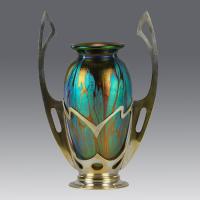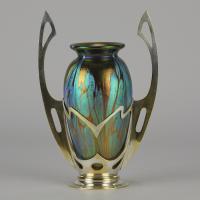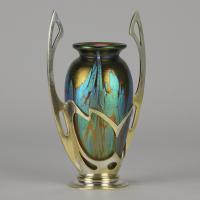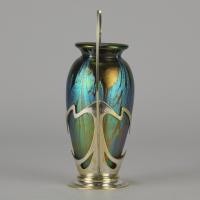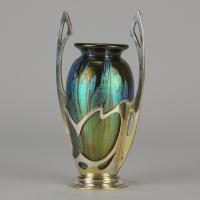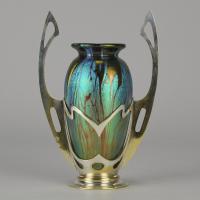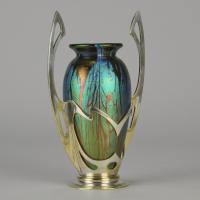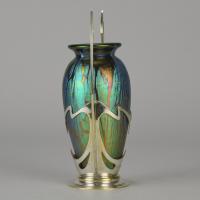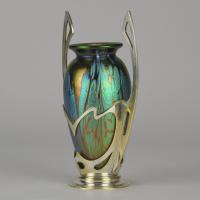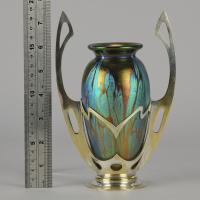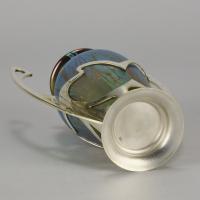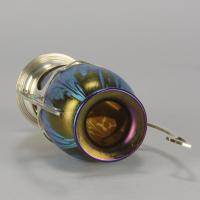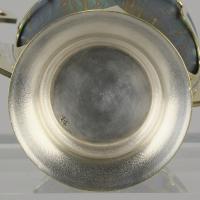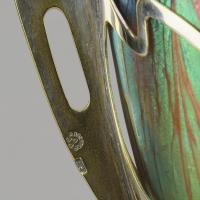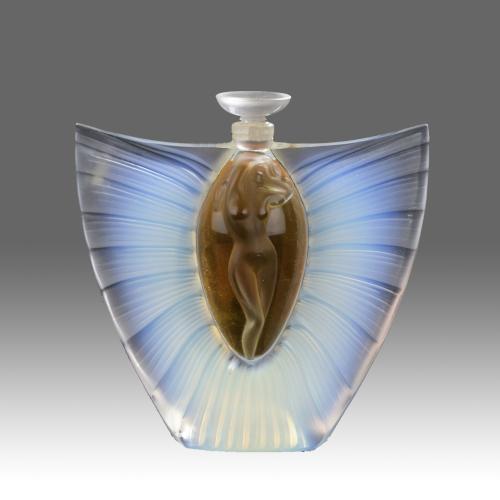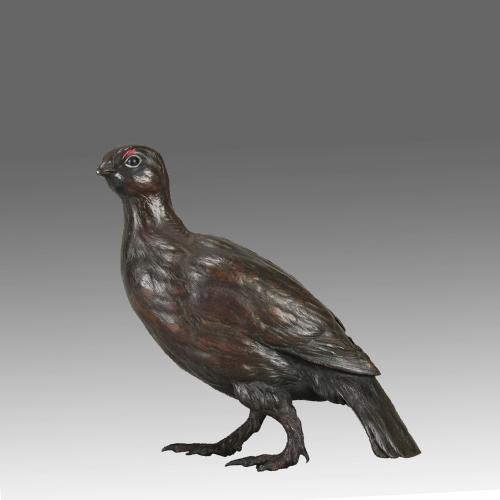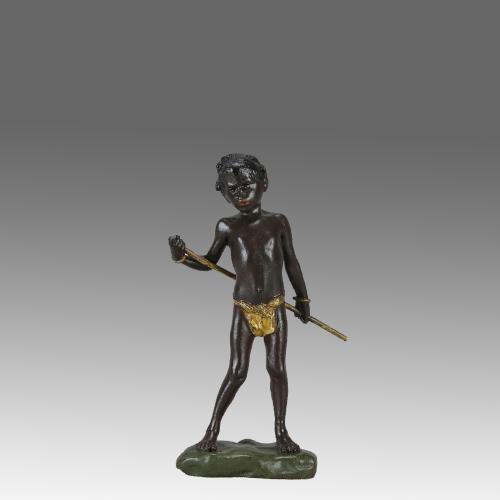
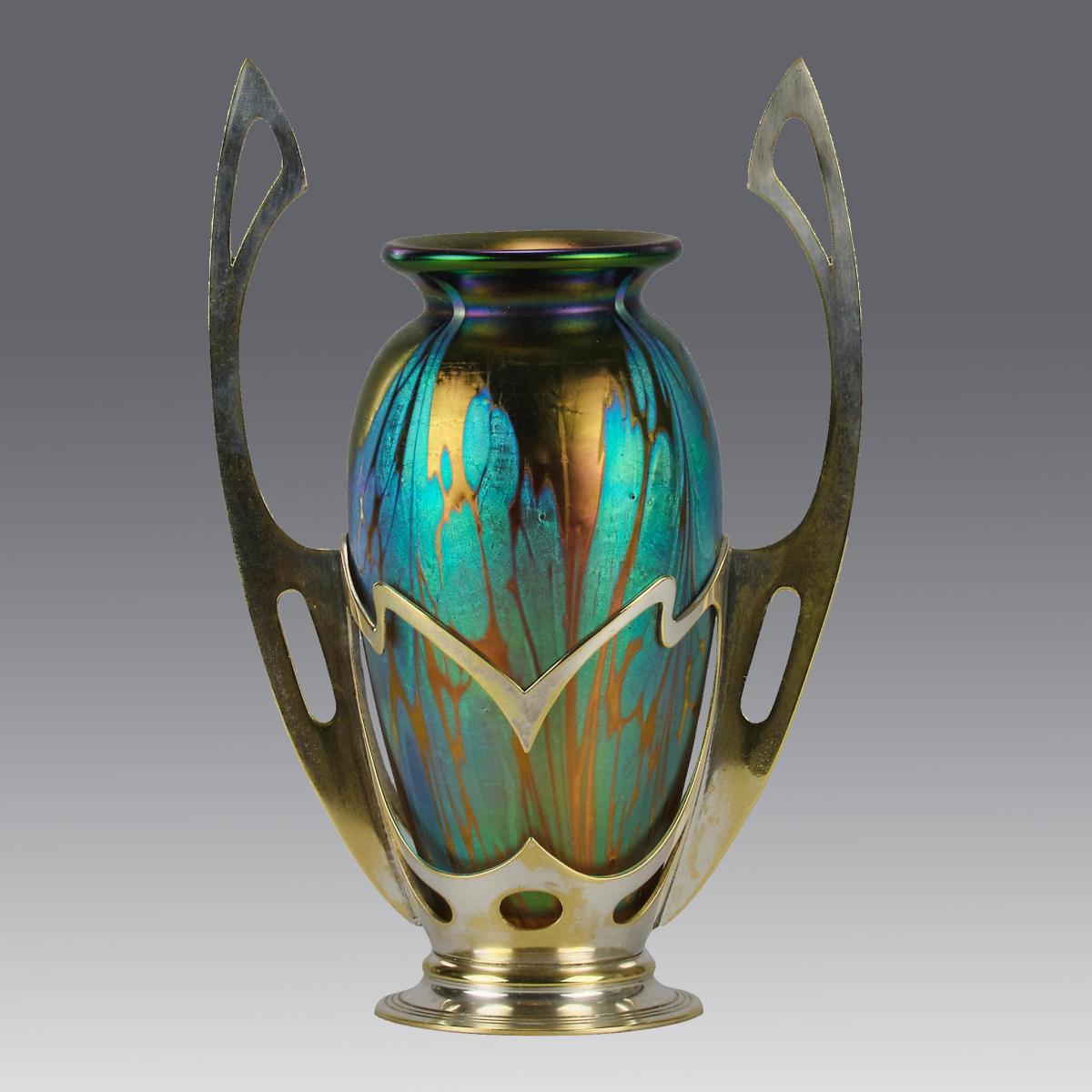
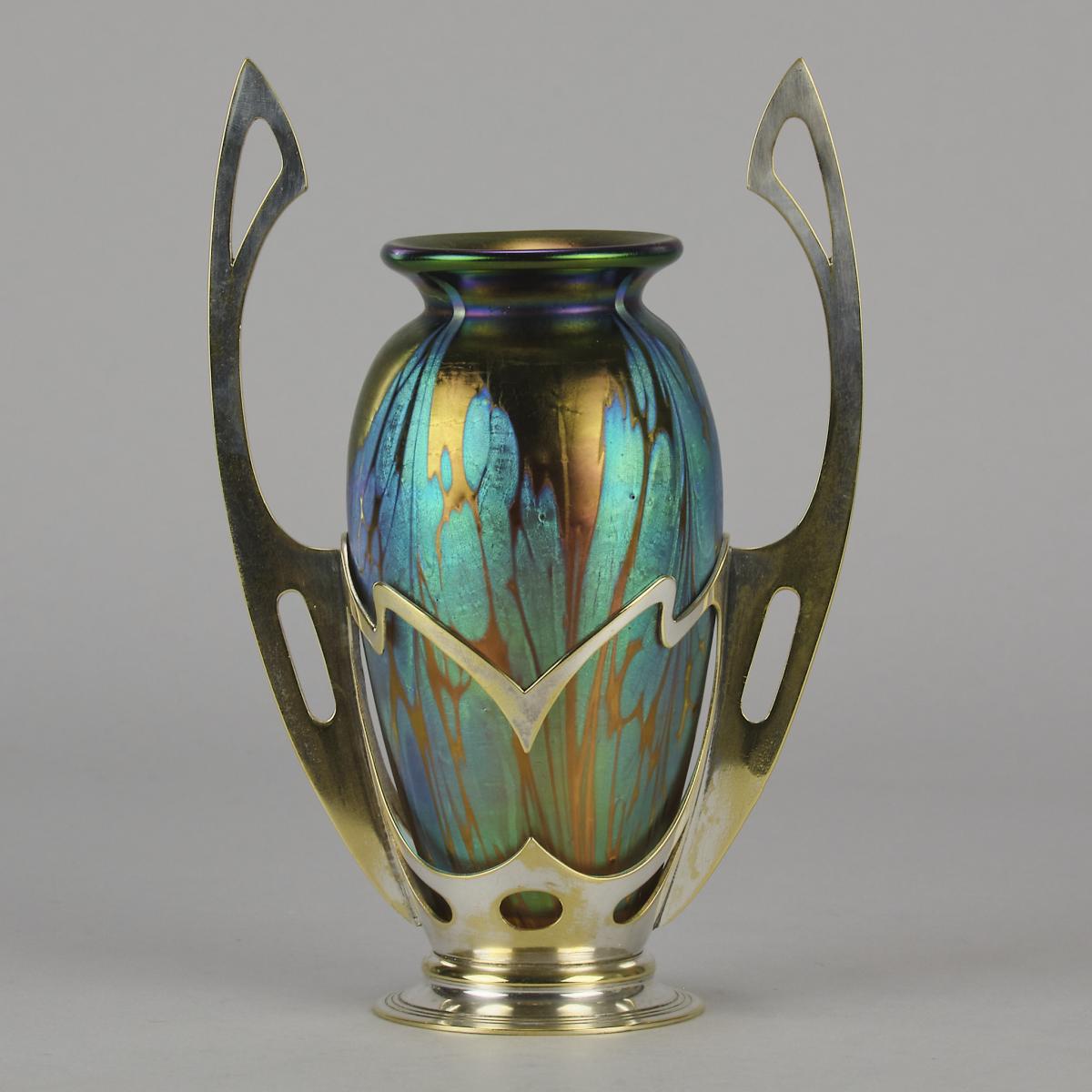
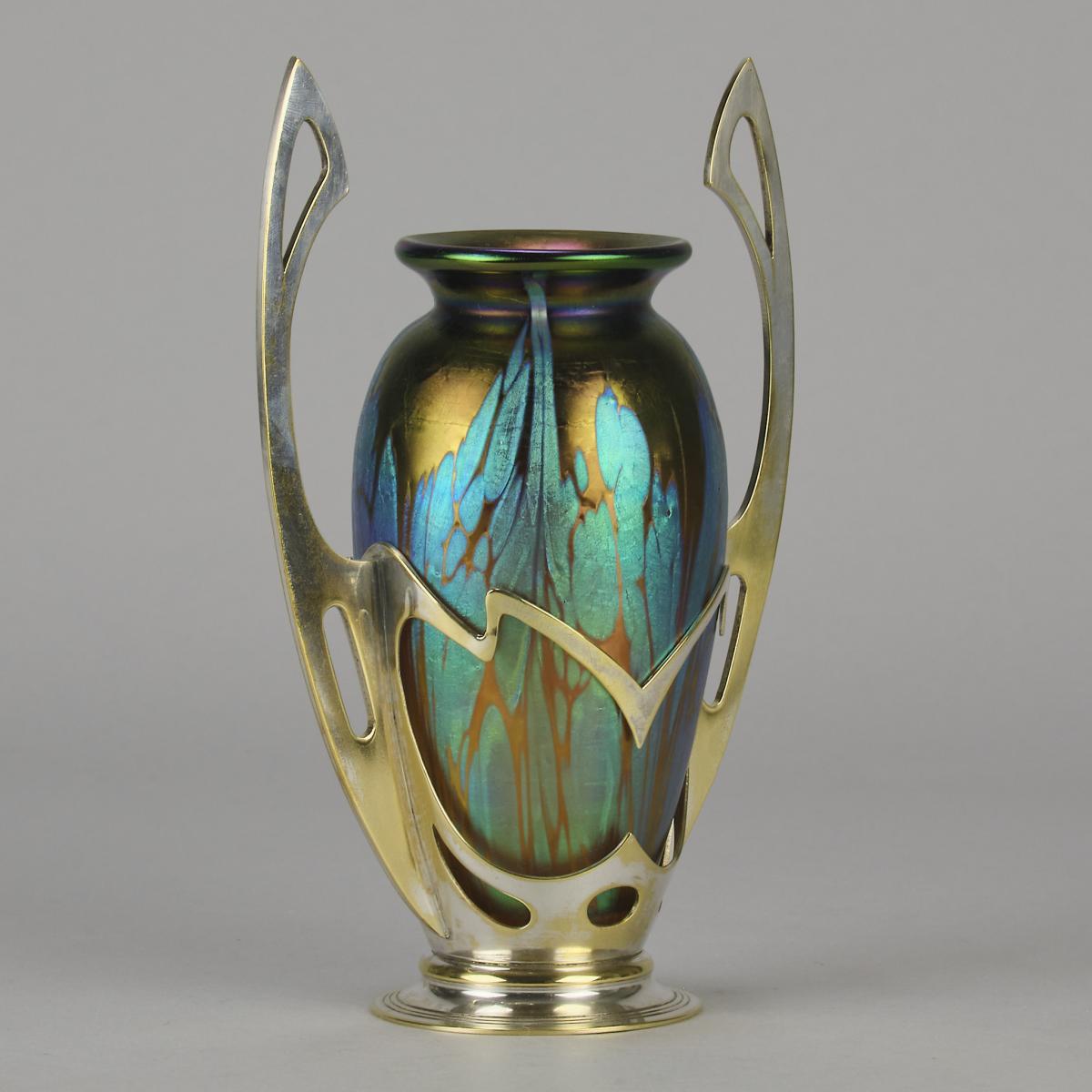
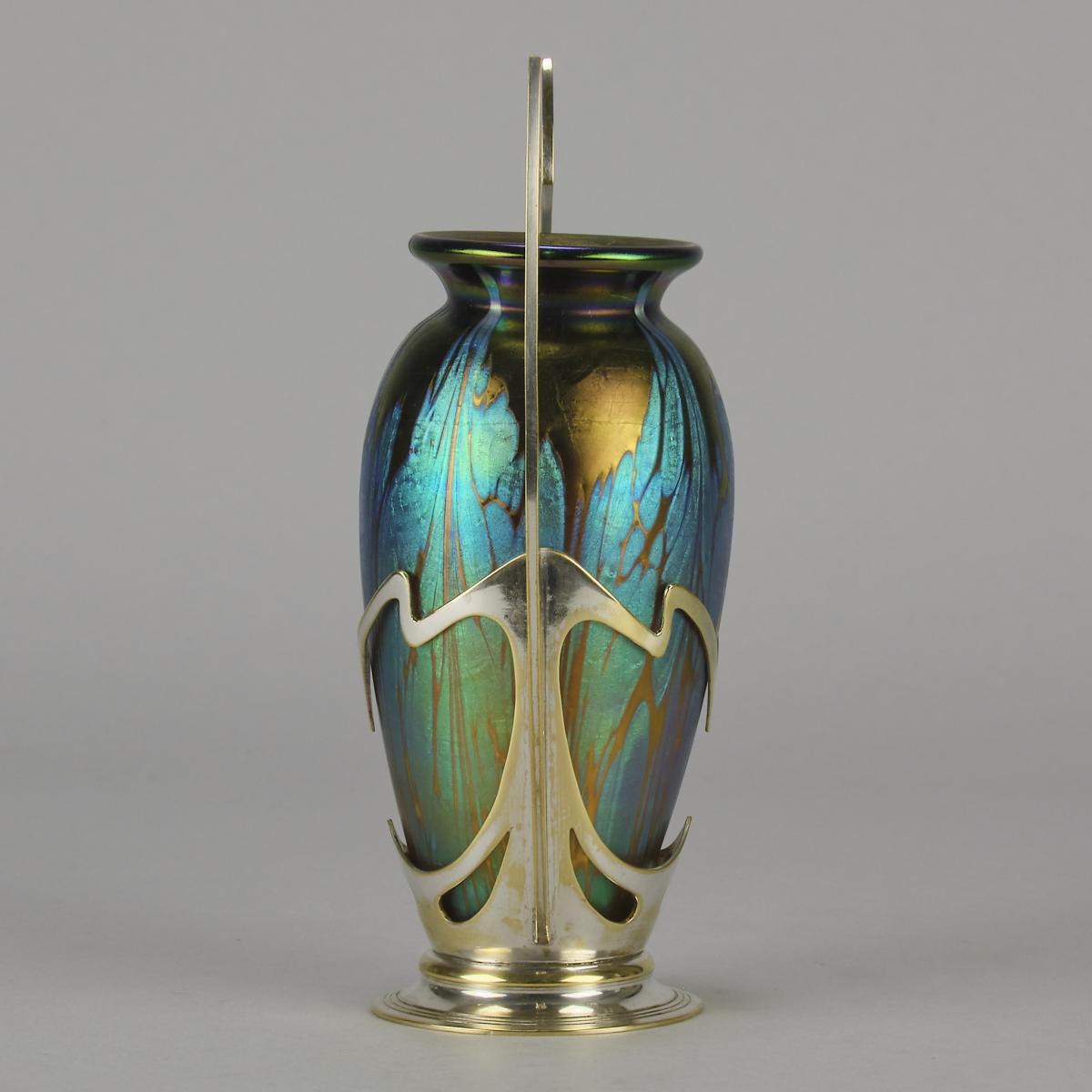
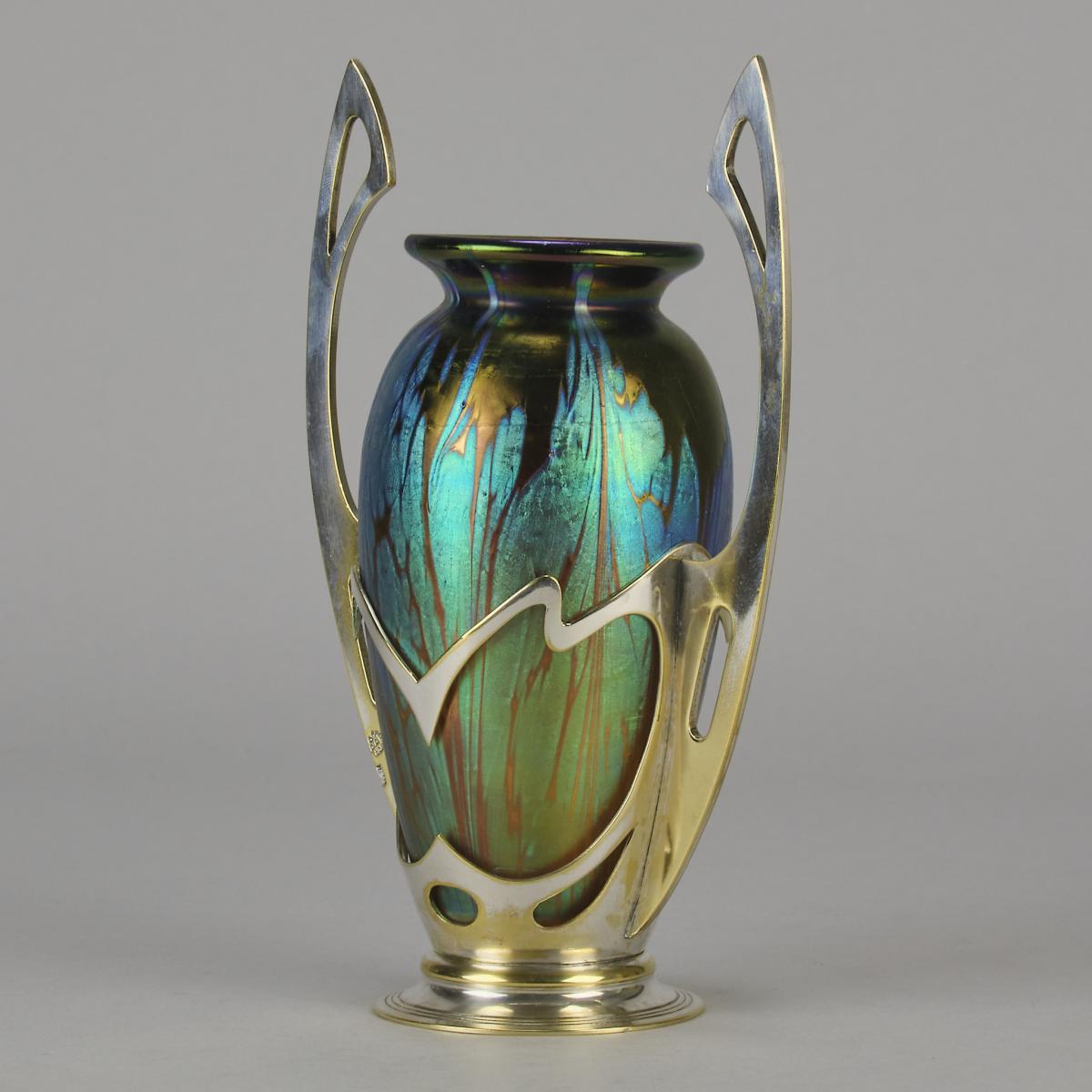
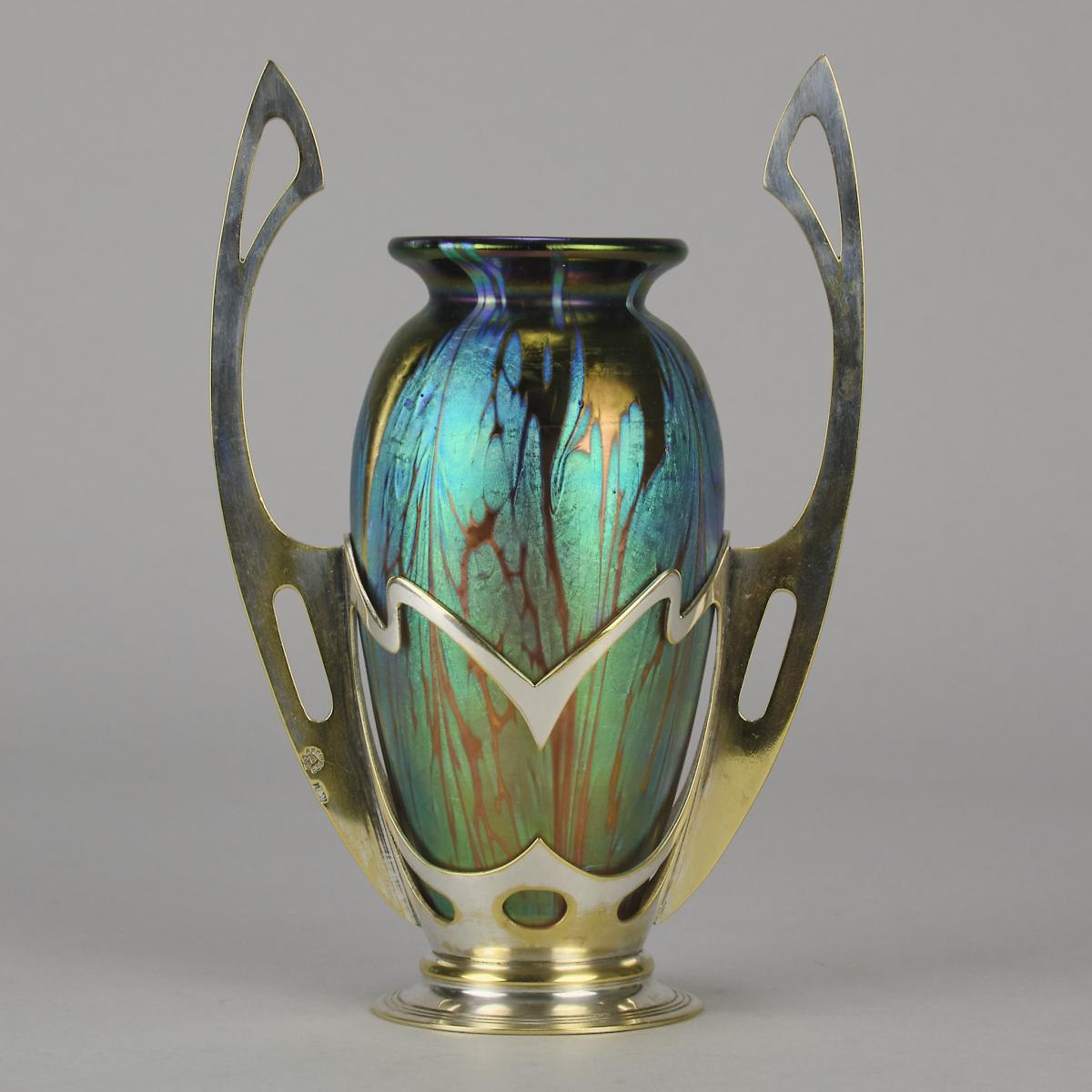
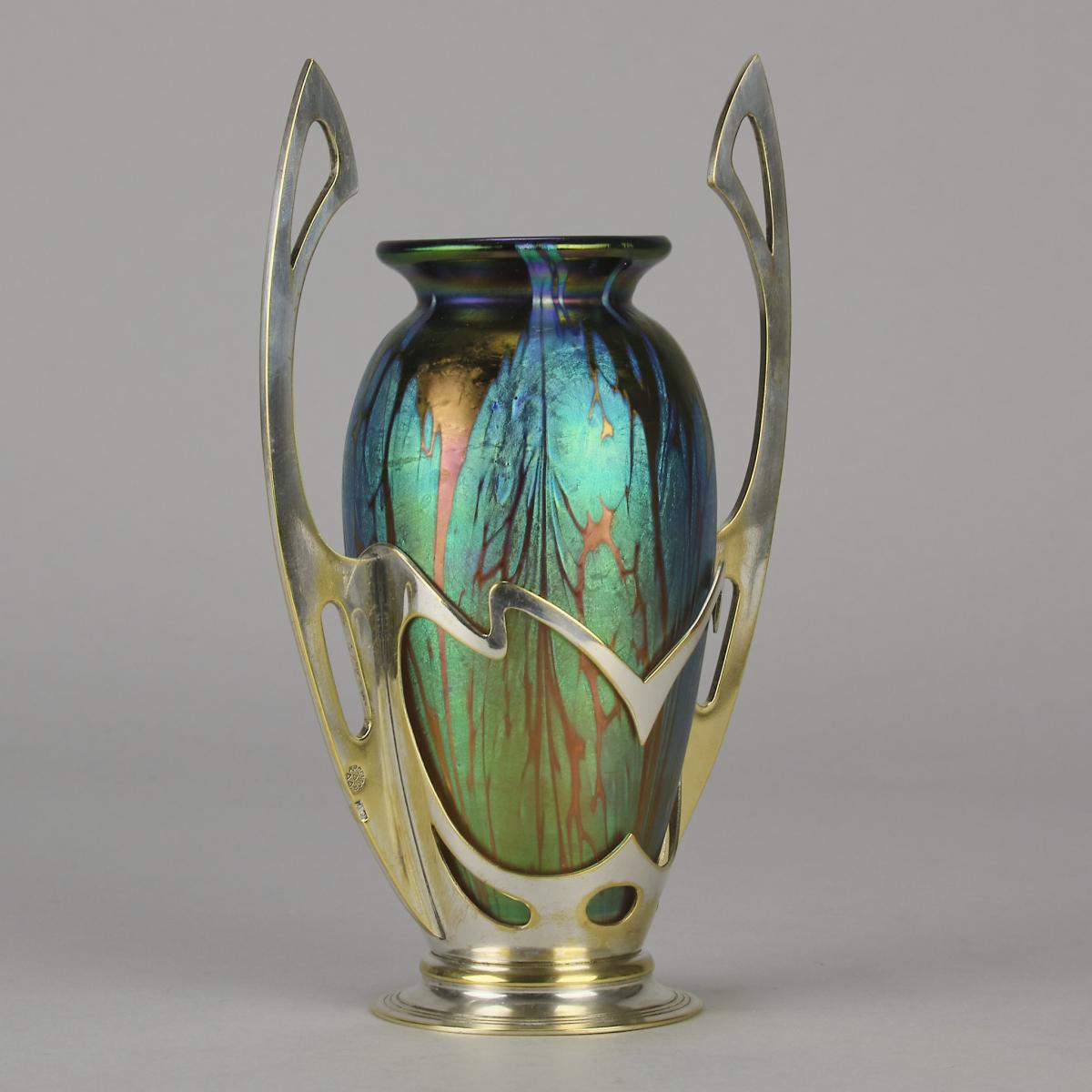
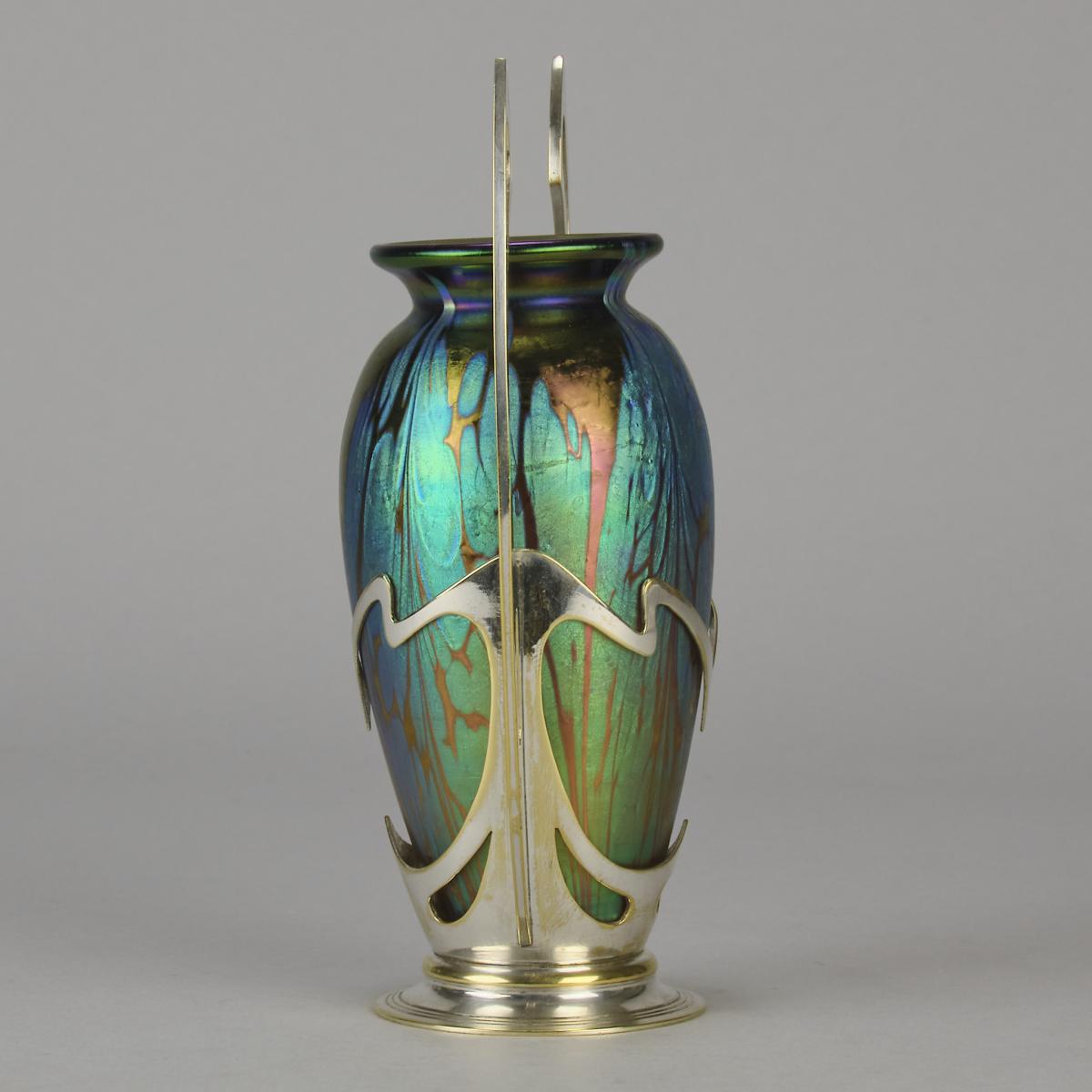
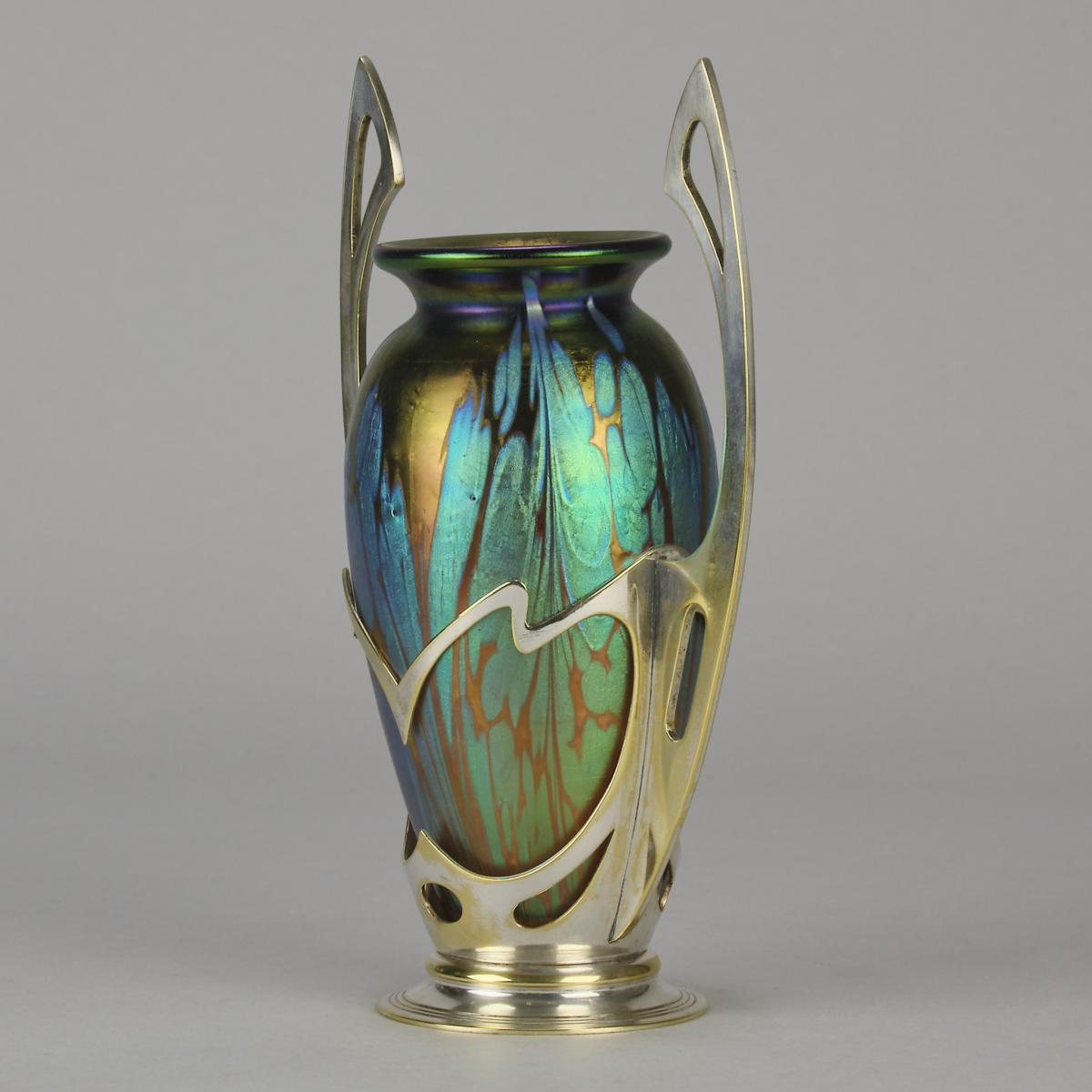
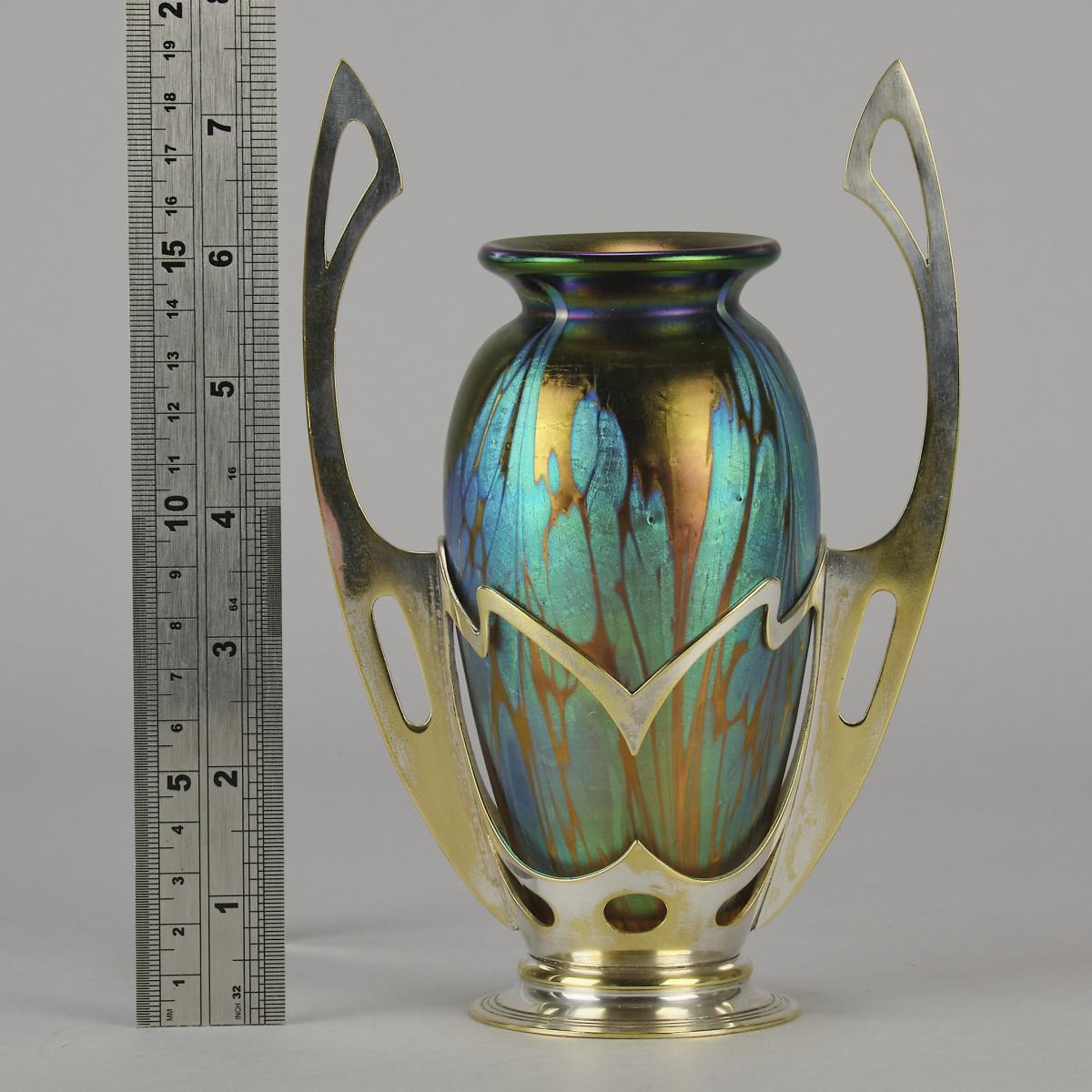
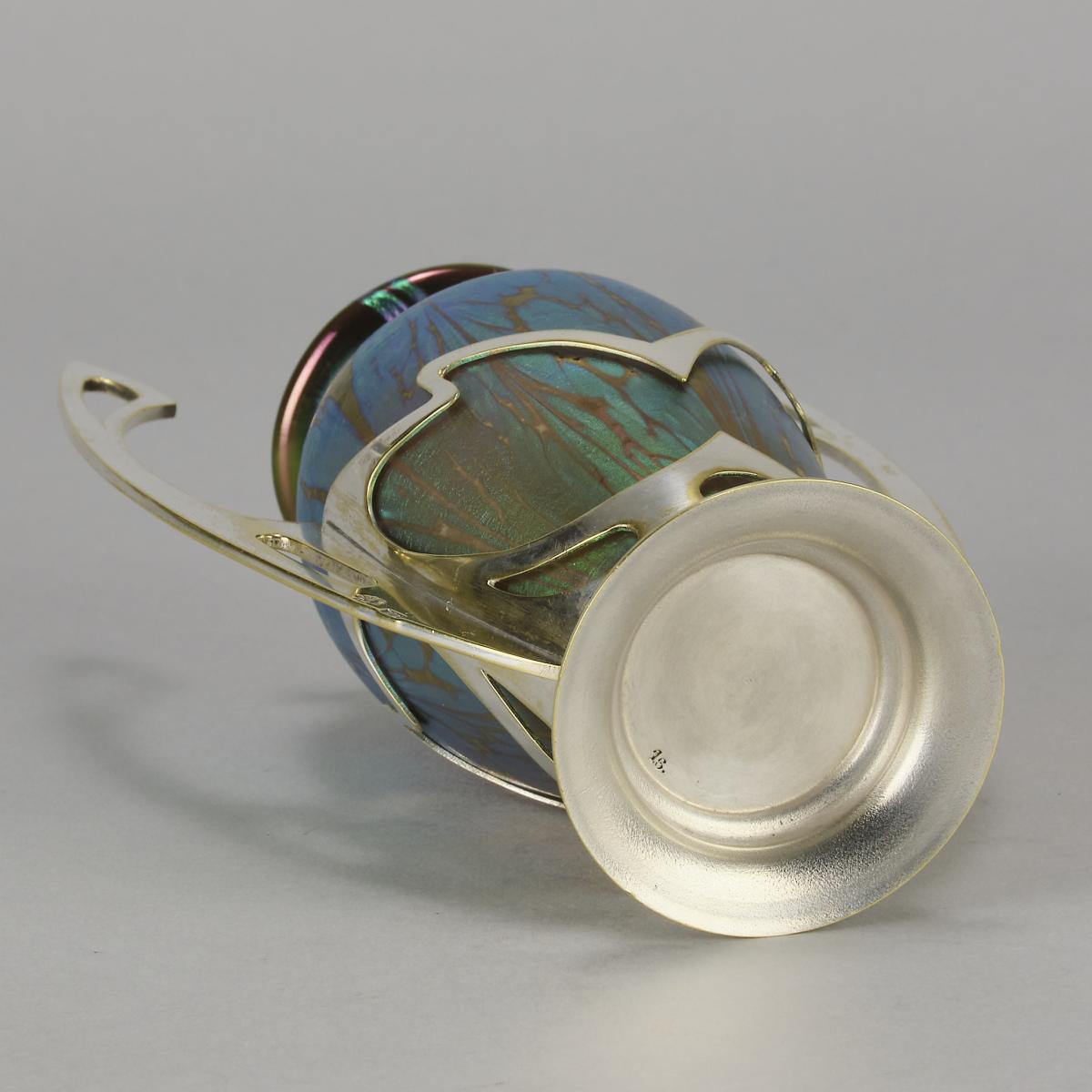
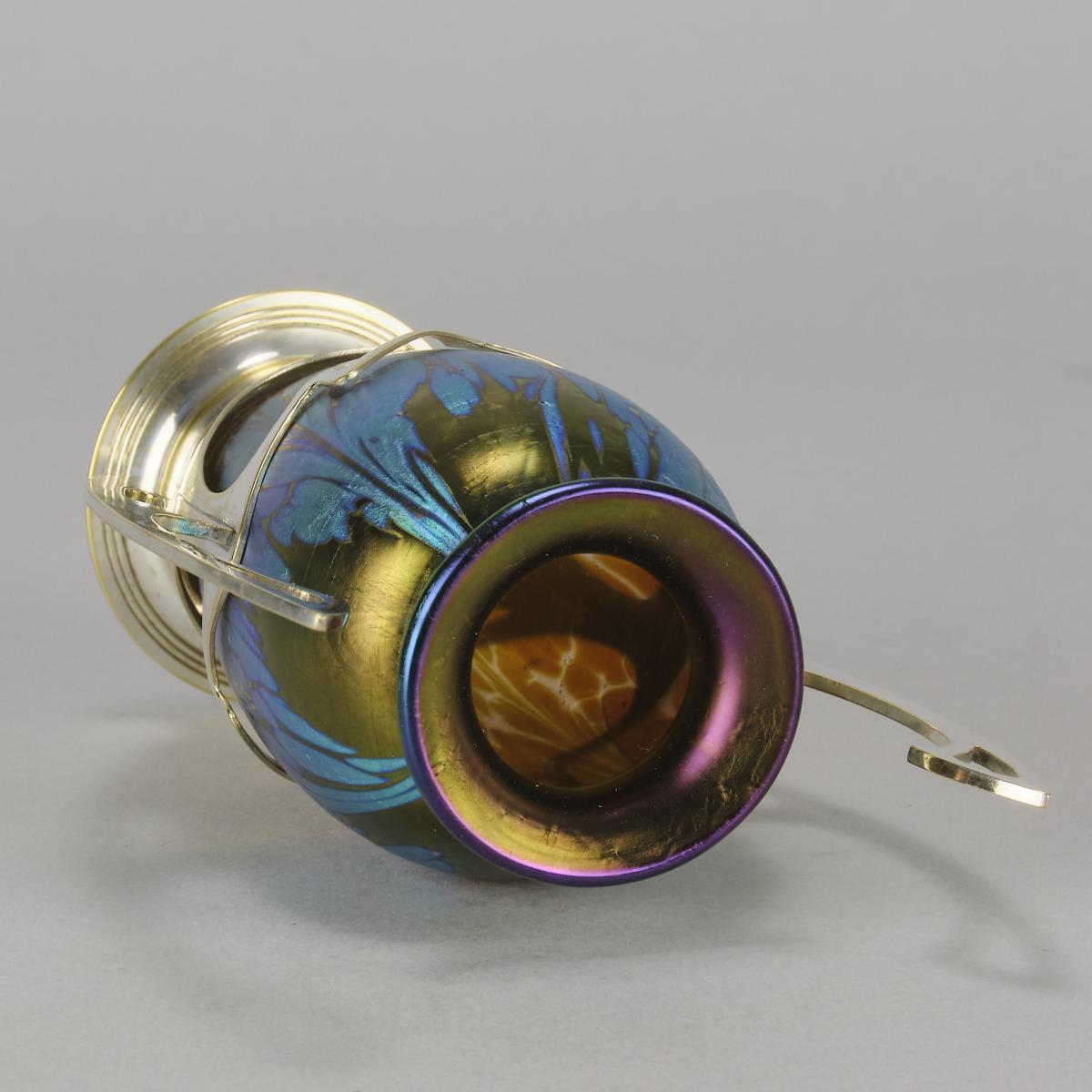
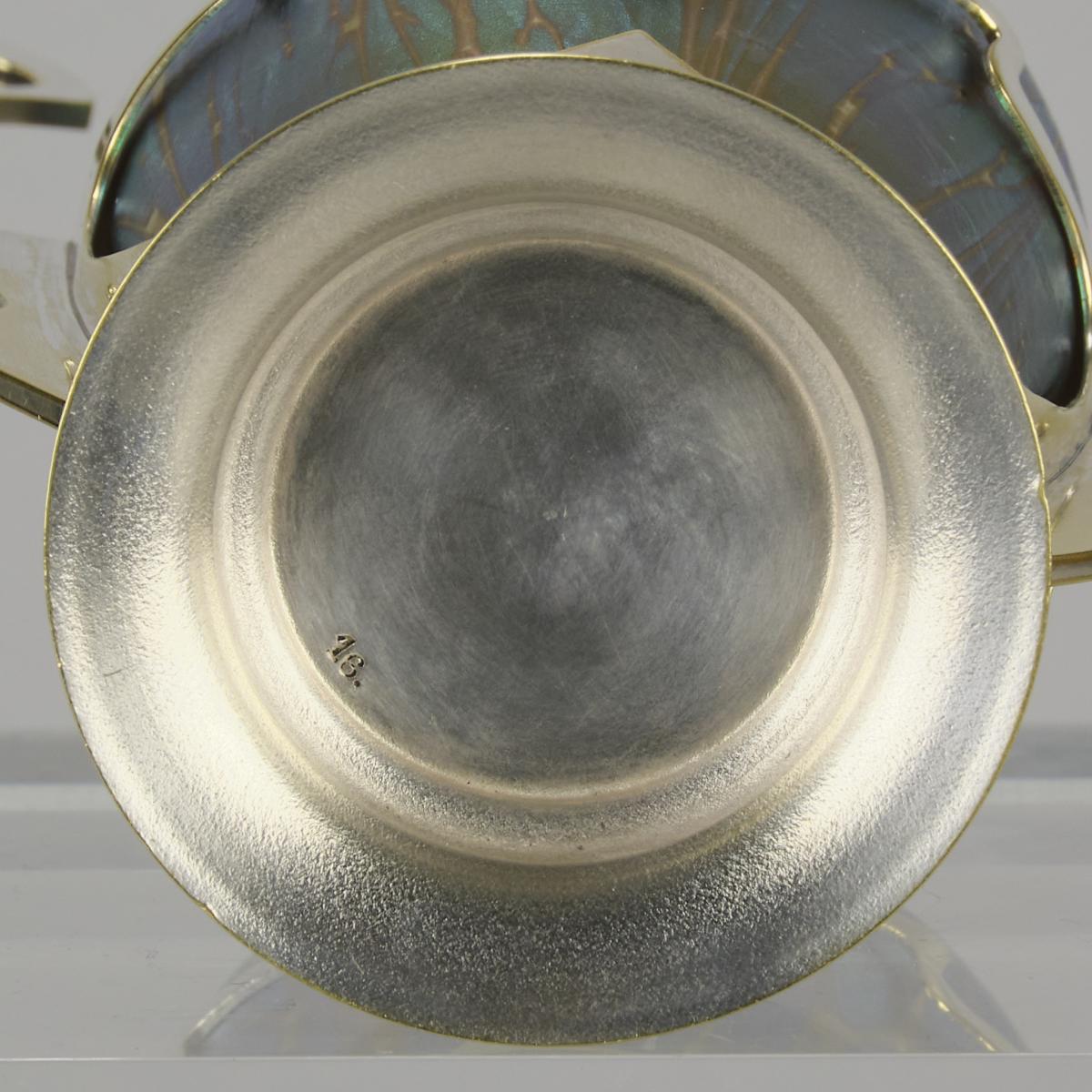
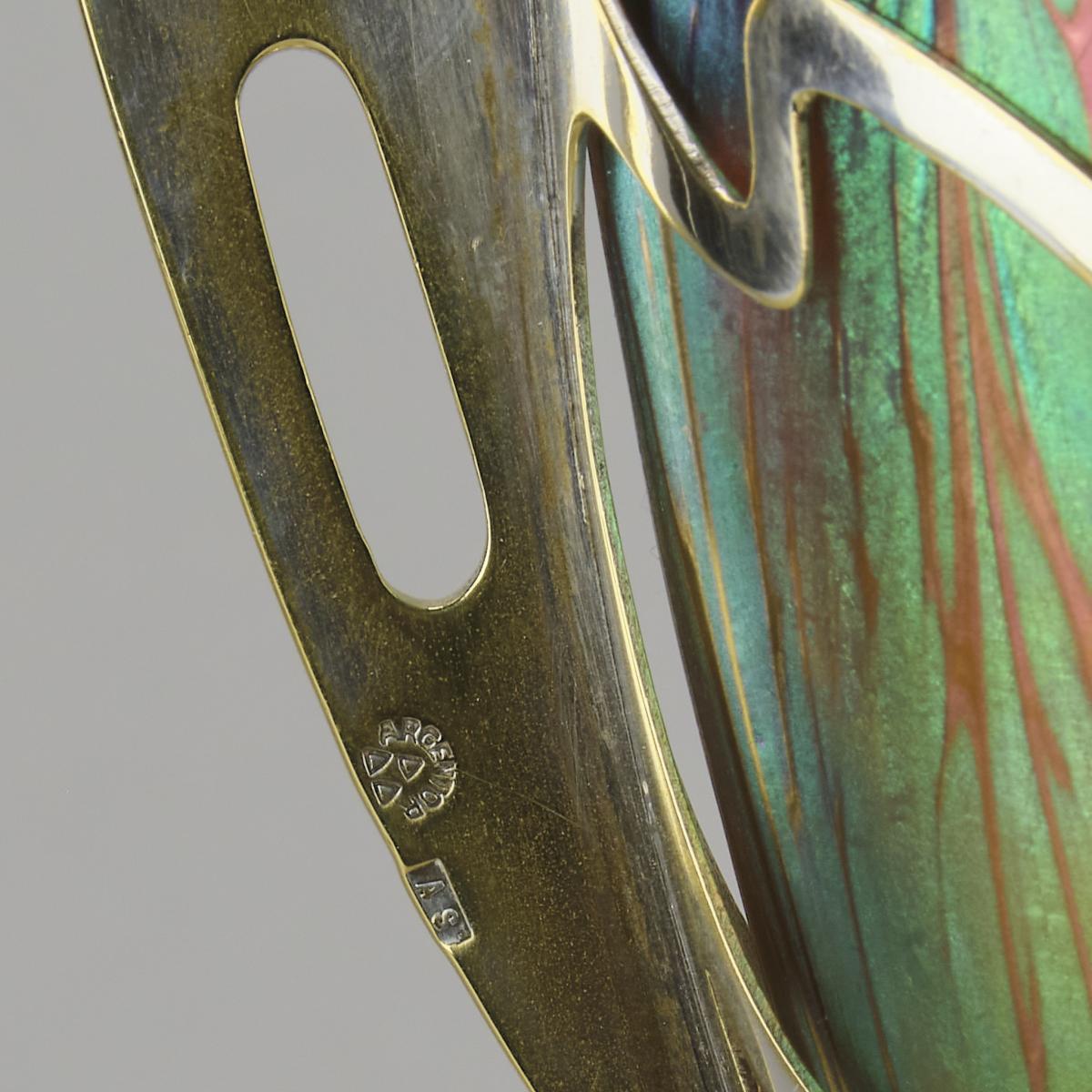
This object is eligible for a Certificate of BADA Provenance
The BADA Standard
- Since 1918, BADA has been the leading association for the antiques and fine art trade
- Members are elected for their knowledge, integrity and quality of stock
- Our clients are protected by BADA’s code of conduct
- Our dealers’ membership is reviewed and renewed annually
- Bada.org is a non-profit site: clients deal directly with members and they pay no hidden fees
A stunning early 20th Century Art Nouveau Secessionist glass vase with fine petrol blue iridescent surface mounted in a twin handled stylised frame, hallmarked
ADDITIONAL INFORMATION
Height: 19 cm.
Width: 13 cm.
Condition: Excellent Condition.
Circa: 1900.
Materials: Glass.
SKU: 6575.
ABOUT
Loetz glass was the premier Bohemian art glass manufacturer during the Art Nouveau period from roughly 1890 to 1920. Founded in 1840 by Johann Loetz in what is now the Czech Republic. The company became known for its innovative techniques, organic forms, and bold use of colour.
By 1889, Loetz was one of the region’s leading glassmakers. That year, the company took first prize at the Paris Exhibition for its classic vase forms, some of which were hand-worked and deformed into swirling, organic-looking shapes like seashells, flowers, and tree trunks. Decorative vases, cups, and pitchers were other popular forms in the Loetz lexicon, and many of the pieces practically glowed thanks to their iridescent sheen from the firing and reduction techniques that were popular at the time. For its contributions to the field, Loetz was awarded the grand prize at the Paris World Exhibition in 1900.
One of the most beautiful and collectible Loetz series from this period is called Phänomen, whose chief characteristic is the rippled or feather like designs on the object’s surface. Loetz glass artisans achieved this unique effect by wrapping hot glass threads around an equally hot molten base. The threads were then pulled on the object’s surface to make waves and other designs while the materials were still malleable.
The company patented the Phänomen technique in 1898 and used it in combination with techniques pioneered by L.C. Tiffany in the United States—in particular, Tiffany’s iridescent Favrile work. Combined, the two techniques provided plenty of inspiration for Loetz designers and artisans, including E. Prochaska, Franz Hofstötter, and Koloman Moser.
The use of patterns is also a hallmark of antique Loetz art glass. Then after 1905, when interest in the florals waned, Loetz pushed its surface treatments further than ever while relying on shapes that had been with the company for decades. For example, the roiling surfaces of the Titania pieces pre-date Abstract Expressionism by three decades, at least. At the other end of the aesthetic spectrum, the Perlglas pieces were translucent, giving more weight to the forms as sculpture rather than distracting the viewer with dazzling surfaces.
The last significant period for Loetz glass occurred between the wars. In the first part of the 1920s, Loetz participated in the popular revival of late 19th-century cameo glass, which had been pioneered by Émile Gallé and others.
Stock number
6575The BADA Standard
- Since 1918, BADA has been the leading association for the antiques and fine art trade
- Members are elected for their knowledge, integrity and quality of stock
- Our clients are protected by BADA’s code of conduct
- Our dealers’ membership is reviewed and renewed annually
- Bada.org is a non-profit site: clients deal directly with members and they pay no hidden fees


